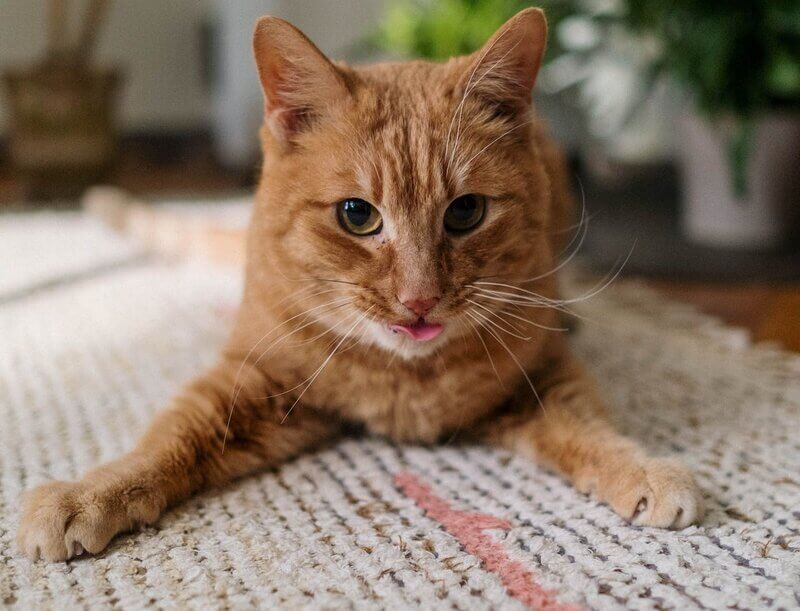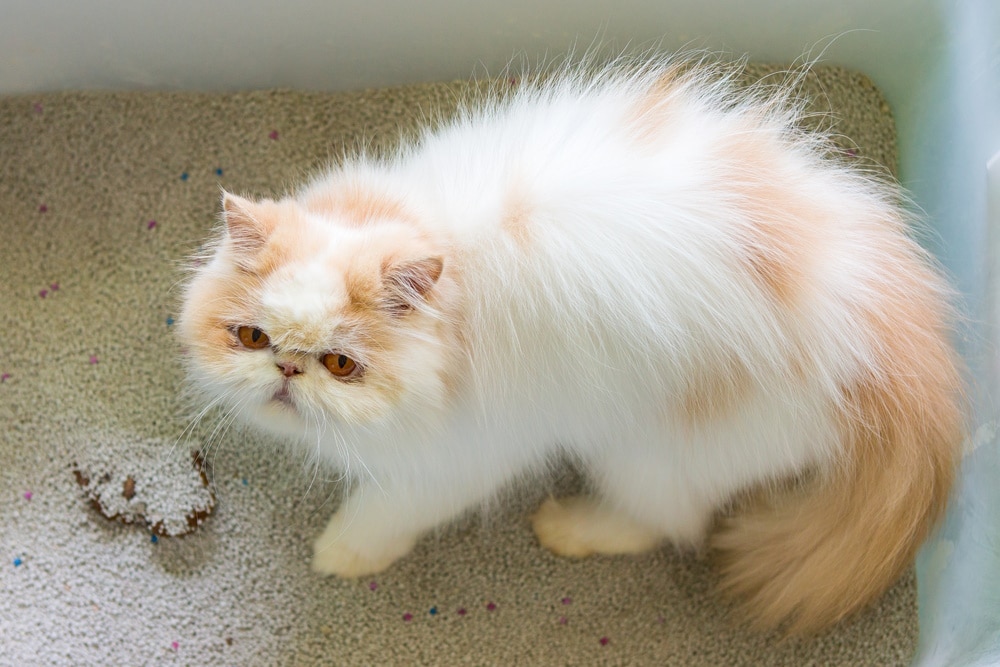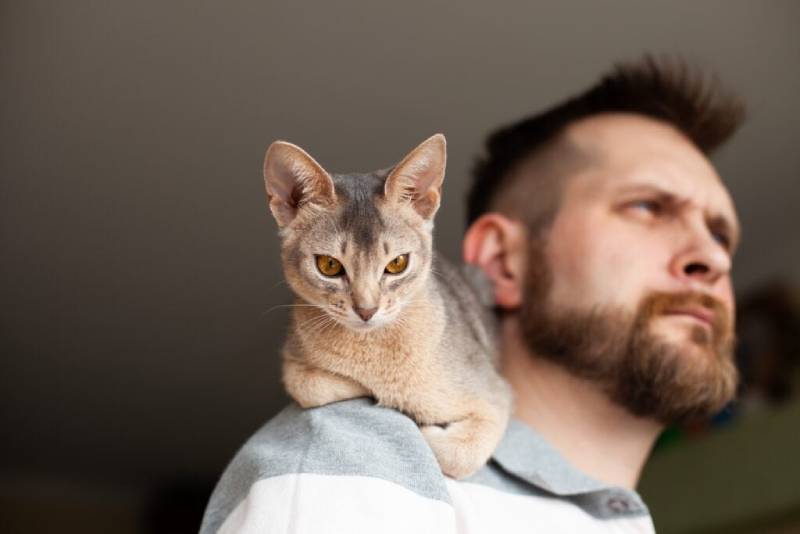If you have a cat, you’ll already know how quirky and unpredictable they can be. Unfortunately, when our cats have something going on, they can’t tell us. It’s up to us to work it out, and it can be challenging, which is where we come in!
If you’re here today because you’re wondering why your cat is licking the carpet, you’ve come to the right place. Your cat’s behavior could be completely normal. If there is an underlying disease or behavioral problem, then we call the mouthing (and likely ingestion) of non-food items such as carpet “pica”. Pica is an umbrella term as the underlying causes are numerous. In this article we will first look into normal kitty behavior and then more concerning behavioral and medical disorders.
The 5 Reasons Why Your Cat Is Licking the Carpet
1. It Might Taste Good
Cats have a fantastic sense of smell and spilled food or drink may have attracted them to the carpet. They may be licking up the residue of something on the carpet.
So, there’s nothing sinister behind their attention, but if you want to deter this behavior, try to distract your cat. The best way to do it is with a toy, but you could also spray the carpet with a safe deterrent your cat won’t enjoy. Just make sure it’s suitable for cats! It might also be time to get your carpet cleaned.
2. Comfort Behavior
Cats will lick and suck as a comforting gesture, so if they’re licking the carpet, they may find it comforting in some way. Your cat may be feeling very comfortable and do this as relaxation. These cats will likely be laying down and kneading in conjunction with the licking behavior.
If your cat is only licking the carpet as they are very comfortable, you probably don’t need to do anything. As long as your cat has all their needs met and isn’t hurting themself by ingesting carpet. If you don’t like them doing this to your carpet, you can try redirecting the behavior onto another object.
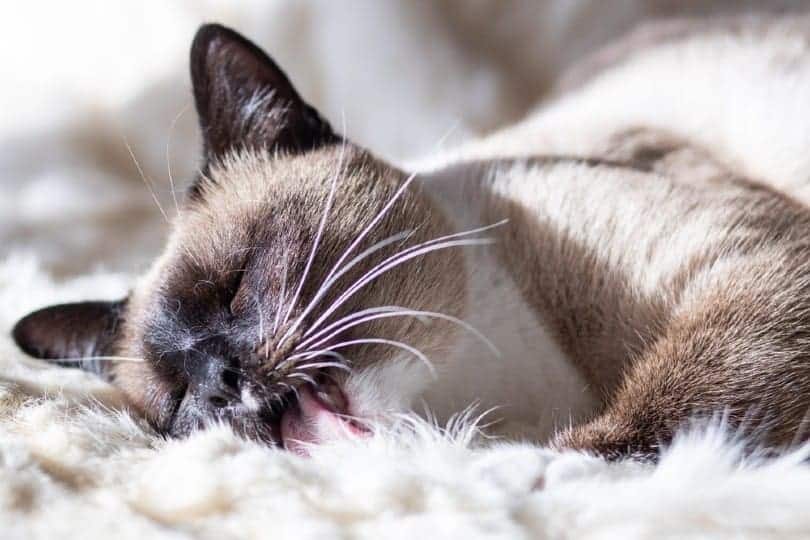
3. Boredom
Just like humans, pets get bored, and your cat might end up licking the carpet for stimulation or because they’re feeling frustrated. If you need ways to keep your bored kitty entertained and out of trouble, purchase new toys, get down on the floor and play, or get new climbing structures like a cat tree.
4. Behavioral Disorders
Anxious cats are likely to lick themselves as well as develop pica as a coping mechanism. It can also be a manifestation of obsessive-compulsive diseases. Chances are, if your cat is feeling this way, there will also be other signs of stress, such as:
- Reactivity
- Aggression
- Digestive issues such as diarrhea or constipation
- Excessive grooming/hair loss
- Excessive scratching
- Inappetence
- Increased sleeping
- Isolation
- Urinating outside the litter box
Pheromone diffusers might help as they emit calming scents to soothe cat nerves. Contact your veterinarian if you are worried about your cat’s stress and anxiety levels. Environmental changes or even anxiety medication may be the answer.
5. Disease
Poor diet and malnutrition will cause pica. Malnutrition can also occur in cats eating a good diet but due to gastrointestinal diseases, such as inflammatory conditions, parasites, cancers, etc., are not able to absorb the nutrients properly. The underlying disease can be almost anything though. If your cat feels unwell, they can use licking as a coping strategy. So, a thorough physical examination by a veterinarian and veterinary tests can help make sure your cat is healthy.
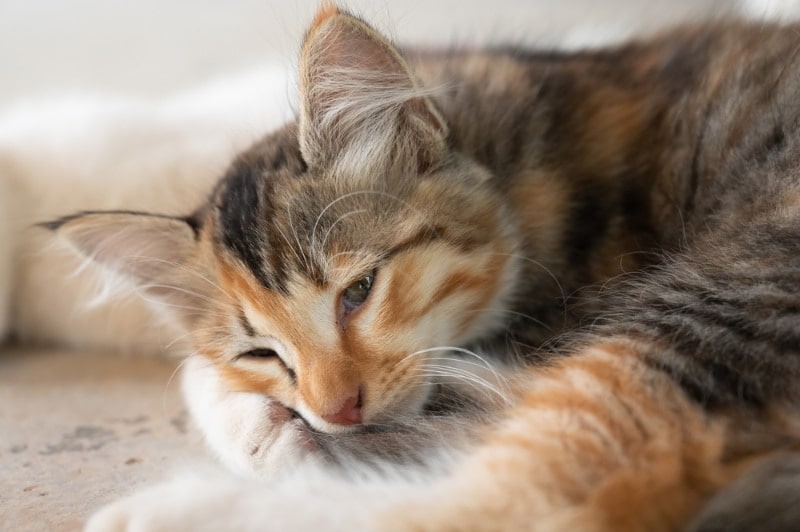
Frequently Asked Questions
Should You Worry About Your Cat Licking the Carpet?
If your cat is not ingesting any fabric and their mental and physical health is good, they may only lick the carpet sporadically. If you’re worried about your cat, it’s best to discuss these things with a veterinarian, to get a plan to help your pet.
Regardless of the cause, if your cat is ingesting carpet fabric they are at risk of a gastrointestinal obstruction or linear foreign body. So, if you notice this behavior in your cat, be alert for signs of illness such as poor appetite and vomiting.
Other areas of concern are the use of cleaning products which can cause oral ulcerations and gastrointestinal irritation in cats. So, be mindful of what you’ve cleaned the carpet with, and stick to steam cleaning if your cat likes to lick carpet.
Why Does Your Cat Lick You and Then Bite You?
You might have noticed your cat also likes to lick you but then will follow it up with biting you. This is usually because they were grooming you but then want to play. You may have also irritated them or crossed a boundary in some way. Their body language will help you figure it out.
Conclusion
There isn’t a straightforward answer to why your cat licks the carpet. Some causes may be innocent, while others mean that your cat needs some help from you and their veterinarian. If the behavior is consistent, it’s worth getting a check-up, especially if there are other signs of problems. Monitor your cat also for signs of an intestinal foreign body, and seek urgent veterinary attention if these occur.
Featured Image Credit: Cottonbro studio, Pexels

